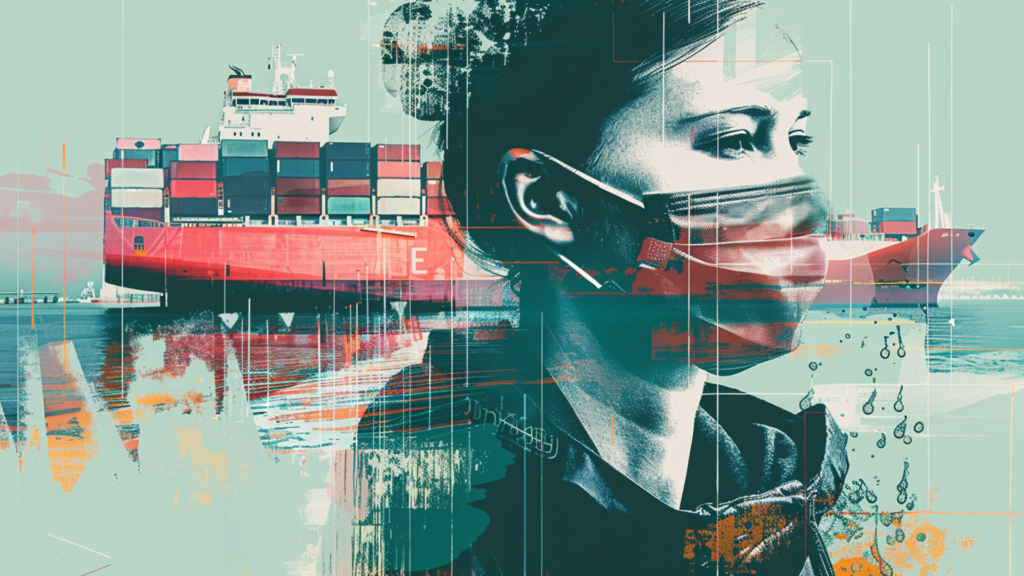Construire des chaînes d'approvisionnement résilientes en prévision de la prochaine perturbation
Bienvenue dans la troisième partie d'une série de sept articles sur les sept principales tendances de la chaîne d'approvisionnement pour 2024. Ce contenu est adapté de notre webinaire, Top 7 Supply Chain Trends for 2024....
Le 16 janvier 2025
Bienvenue dans la troisième partie d'une série de sept articles sur les sept principales tendances de la chaîne d'approvisionnement pour 2024. Ce contenu est adapté de notre webinaire, Top 7 Supply Chain Trends for 2024. Cliquez ici pour regarder.
Si vous avez manqué nos deux premières tendances, vous pouvez commencer par la tendance #1, La montée continue de l'IA et du ML dans l'optimisation de la chaîne d'approvisionnement, ici. Cette semaine, nous nous penchons sur notre tendance phare n°3 pour 2024, Construire des chaînes d'approvisionnement résilientes pour la prochaine perturbation.

Le point de vue de 2024 sur la résilience de la chaîne d'approvisionnement
Ces dernières années, les chaînes d'approvisionnement du monde entier ont été mises à rude épreuve, qu'il s'agisse des défis sans précédent posés par la pandémie de grippe aviaire COVID-19 ou des problèmes opérationnels causés par le niveau historiquement bas des eaux du canal de Panama. Ces événements ont mis en lumière une idée essentielle : il est plus important que jamais de mettre en place des chaînes d'approvisionnement résilientes et adaptables, capables de résister aux perturbations futures.
Pour les gestionnaires de la chaîne d'approvisionnement, les professionnels de la logistique, les chefs d'entreprise et tous ceux qui sont chargés de naviguer dans ces réseaux complexes, il est essentiel de comprendre le schéma directeur de la résilience face à l'imprévisibilité. Le chemin parcouru entre 2020 et aujourd'hui a transformé les chaînes d'approvisionnement, qui sont passées de systèmes délicats à l'équilibre complexe, semblables à un jeu de Jenga, à des entités robustes et adaptables, prêtes à faire face à des défis imprévus.
Lors de notre webinaire sur les 7 principales tendances de la chaîne d'approvisionnement pour 2024, Leigh Chesley a évoqué l'évolution du paysage des chaînes d'approvisionnement et les changements stratégiques nécessaires pour favoriser la résilience. Les principales conclusions ont mis en évidence le fait qu'en 2024, les gestionnaires de la chaîne d'approvisionnement devront privilégier la flexibilité, l'agilité et la visibilité en temps réel pour anticiper avec succès la prochaine perturbation. L'abandon de la fabrication en flux tendu au profit de pratiques permettant de stocker les stocks et de renforcer les chaînes d'approvisionnement a marqué un ajustement stratégique important en réponse à la pandémie.
Mais l'histoire de la traversée a servi de rappel poignant : qu'il s'agisse d'une crise sanitaire mondiale ou de phénomènes naturels affectant des voies commerciales essentielles comme le canal de Panama, les chaînes d'approvisionnement sont intrinsèquement exposées à une myriade de vulnérabilités. Et si les technologies de pointe comme l'IA et l'apprentissage automatique offrent des capacités prédictives, on ne peut pas compter uniquement sur elles pour prévoir toutes les perturbations potentielles.
Stratégies de base pour la mise en place de chaînes d'approvisionnement résilientes
La discussion a mis en lumière plusieurs stratégies qui constituent le fondement des chaînes d'approvisionnement résilientes :
- Résister à la tempête grâce à un plan de résilience: Disposer d'un plan, c'est comme avoir un parapluie solide en cas d'averse : c'est une protection essentielle en cas de perturbations inattendues.
- Diversification des fournisseurs: Cultiver un réseau diversifié de fournisseurs permet de s'assurer que si un maillon de la chaîne est défaillant, un autre peut prendre le relais en toute transparence, minimisant ainsi les perturbations opérationnelles.
- Approche holistique de l'atténuation des risques: Renforcer la résilience ne consiste pas seulement à prévenir les risques, mais aussi à saisir les opportunités d'innovation et à s'adapter aux menaces et aux défis émergents.
Si le renforcement de la résilience de la chaîne d'approvisionnement présente de nombreux avantages, il est essentiel de reconnaître les difficultés inhérentes à cette démarche.
Ne manquez jamais une histoire. Restez informé de l'actualité de Rebus au fur et à mesure qu'elle se produit.
L'évolution continue de la gestion de la chaîne d'approvisionnement
Construire une chaîne d'approvisionnement résiliente ne consiste pas à créer un système infaillible capable d'anticiper et d'atténuer tous les risques imaginables. Il s'agit plutôt de développer un cadre flexible et adaptable capable de répondre et de se remettre efficacement d'événements imprévus.
Ce que nous avons vu ces dernières années souligne la nécessité de disposer de chaînes d'approvisionnement capables non seulement de résister aux chocs, mais aussi de continuer à s'adapter et à évoluer. Au-delà de cette année, c'est la capacité à s'adapter aux nouveaux défis qui distinguera les chaînes d'approvisionnement les plus performantes des autres.
La résilience de la chaîne d'approvisionnement est un processus continu d'apprentissage, d'adaptation et d'évolution. Il s'agit d'élaborer une stratégie suffisamment souple pour faire face à l'inattendu et suffisamment solide pour résister à l'épreuve du temps et aux défis imprévus. Pour les gestionnaires de la chaîne d'approvisionnement, adopter cet état d'esprit et investir dans la résilience aujourd'hui ouvrira la voie à un avenir mieux préparé, plus agile et plus compétitif.
Conclusion
Alors que le paysage des chaînes d'approvisionnement mondiales continue d'évoluer, la compréhension et la mise en œuvre des principes de résilience deviendront encore plus cruciales. Le chemin vers la résilience peut être complexe, mais les récompenses - la durabilité, l'efficacité et la capacité à faire face aux imprévus - en valent la peine. Continuons à nous adapter, à innover et à construire des chaînes d'approvisionnement résilientes, capables de résister à tout ce que l'avenir nous réserve.
Restez à l'écoute pour notre prochain top 2024 des tendances de la chaîne d'approvisionnement : La révolution des jumeaux numériques.
Vous voulez en savoir plus sur la résilience ? Regardez notre webinaire Resiliency in the Supply Chain : Does it Really Mean What You Think it Means ? avec Ryan Uhlenkamp, COO de Longbow Advantage, et Josh Owen, CEO et fondateur de Cycle Labs.
Les 7 tendances de la chaîne d'approvisionnement pour 2024 :
- L'essor continu de l'IA et de l'apprentissage automatique dans l'optimisation de la chaîne d'approvisionnement
- Créer une valeur durable grâce aux pratiques de l'économie circulaire
- Construire des chaînes d'approvisionnement résilientes en prévision de la prochaine perturbation
- La révolution des jumeaux numériques
- Transformer la logistique grâce aux technologies émergentes
- Atténuer les risques de la chaîne d'approvisionnement grâce à une visibilité en temps réel et à des tours de contrôle
- Le rôle des personnes dans la construction de l'avenir de la chaîne d'approvisionnement








